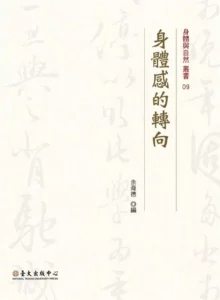
Shuenn-Der Yu
Taipei: National Taiwan University Press, 2016.
Reviewed by: Ryan Xin Xie (PhD Candidate, Chinese University of Hong Kong, HYI Visiting Fellow)
The Shentigan Turn, edited by Shuenn-Der Yu, is a compelling collection of essays that delves into the intricate relation between body and sensation. This volume, comprising eight chapters, offers a rich tapestry of theoretical insights and empirical research, making it a significant contribution to the fields of anthropology, cognitive science, literature, and culture studies.
The book is organized into two thematic sections: foundational theories, and empirical studies. In the first section, Yu and Chung lay the groundwork for understanding sensory perception as a dynamic interplay between the body, environment, and cultural context, emphasizing that bodily sensations are not just passive feelings but are integral to our actions and interactions with the world. Yu’s chapter introduces the idea of Shentigan (bodily sensations) as a key element in exploring cultural issues, proposing that culture can be understood as a system of Shentigan. By coining the word Shentigan as a theoretical concept and research orientation focusing on the cultivation of perceptual abilities and the systematic relationship among bodily sensations, Yu aims to enrich the discourse on how we perceive and engage with the world around us. Chung complements this perspective with an ecological overview of sensory perception. Coupling the notions of “affordance” (Gibson 1979) and “umwelt” (von Uexküll 2010), Chung emphasizes the significance of both internal and external environments in shaping Shentigan in both human and nonhuman organisms. Moreover, Chung argues that human Shentigan are far richer than other species because human capacities in not only adapting to but also changing and creating the environment.
The empirical studies section is particularly noteworthy with each chapter delves into the diverse manifestation of bodily sensations across various contexts. Chang’s research employs material culture studies of scent and incense to explore theoretical strength of Shentigan in elucidating dynamics between materials and bodily sensations. Her analysis provides a new way of conceptualizing culture as a system of Shentigan, which enables studies of culture in both collective (the accumulation of sediment that arises from the perceptual process of human interaction with the environment or material) and individual levels (the way individuals perceive external environment).
Chien’s chapter traces the disciplinary history of anthropology’s writings and theoretical debates on emotions and feelings to showcase the intricate interrelations between emotions, feelings, society, culture, history, and environments. Through a literature review of specific ethnographic materials in anthropology, this chapter proposes that the interplay of the body with Shentigan also manifest within the contexts of ethnography and fieldwork.
Wang and Tsai’s chapter examines the embodied experience of 靈動 (lingdong, spirit possession) in Taiwanese folk religious contexts while exploring theoretical potentials of the concept of Shentigan in opening up for understanding the sacredness in religious studies. Wang and Tsai argue that past theories of the sacredness in religious studies have not sufficiently emphasized the role of the bodily perception in encountering the sacredness. The theoretical orientation of Shentigan hence offers new analytical perspectives.
The volume also addresses the implications of Shentigan in the realms of literature and paleography. Tsai’s chapter reinterprets the relationship between the tradition of cultivation in Zhuangzi and Shentigan. Through metaphorical decoding, Tsai meticulously examines Zhuangzi’s theory of happiness, and argues that the Shentigan and emotions in Zhuangzi are mutually reflective and interdependent: as Shentigan is refined, the ability to control emotions also improves. Ting’s chapter deciphers the ancient Chinese writing system and demonstrates that it bears witness to the crucial role of Shentigan in the formation of characters, while also elucidating many linguistic phenomena. In contrast to the arbitrary connections between signifiers and signifieds found in phonetic scripts, Ting shows that ancient Chinese characters exhibit a different structural significance, which illustrates the interactive relationship between bodily experiences and written symbols.
Overall, The Shentigan Turn is a thought-provoking volume that successfully bridges theory and empirical studies. The divers range of topics covered in the chapters not only enhances our understanding of bodily sensations but also opens new avenues for future research. This book is an essential read for scholars interested in the embodied nature of human experience, providing valuable insights into the dynamic interplay of body, perception, culture, and environment.
References:
Gibson, J.J. 1979. The Ecological Approach to Visual Perception. Boston: Houghton Mifflin.
Uexküll, Jakob von. 2010. A Foray into the Worlds of Animals and Humans: with A Theory of Meaning. trans. Joseph D. O’Ne
